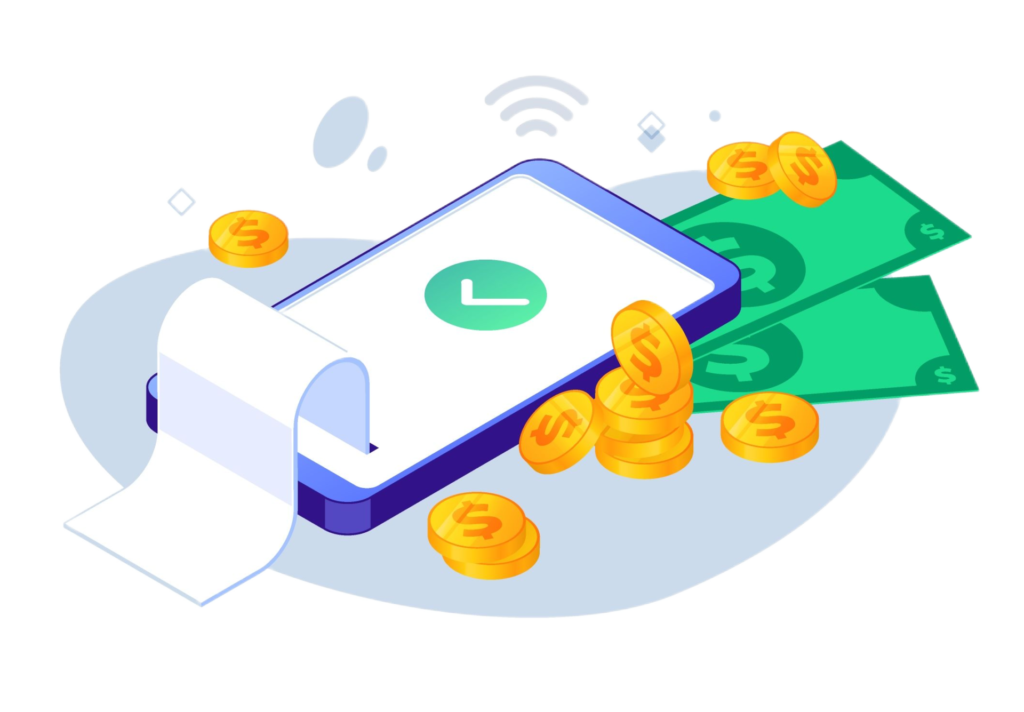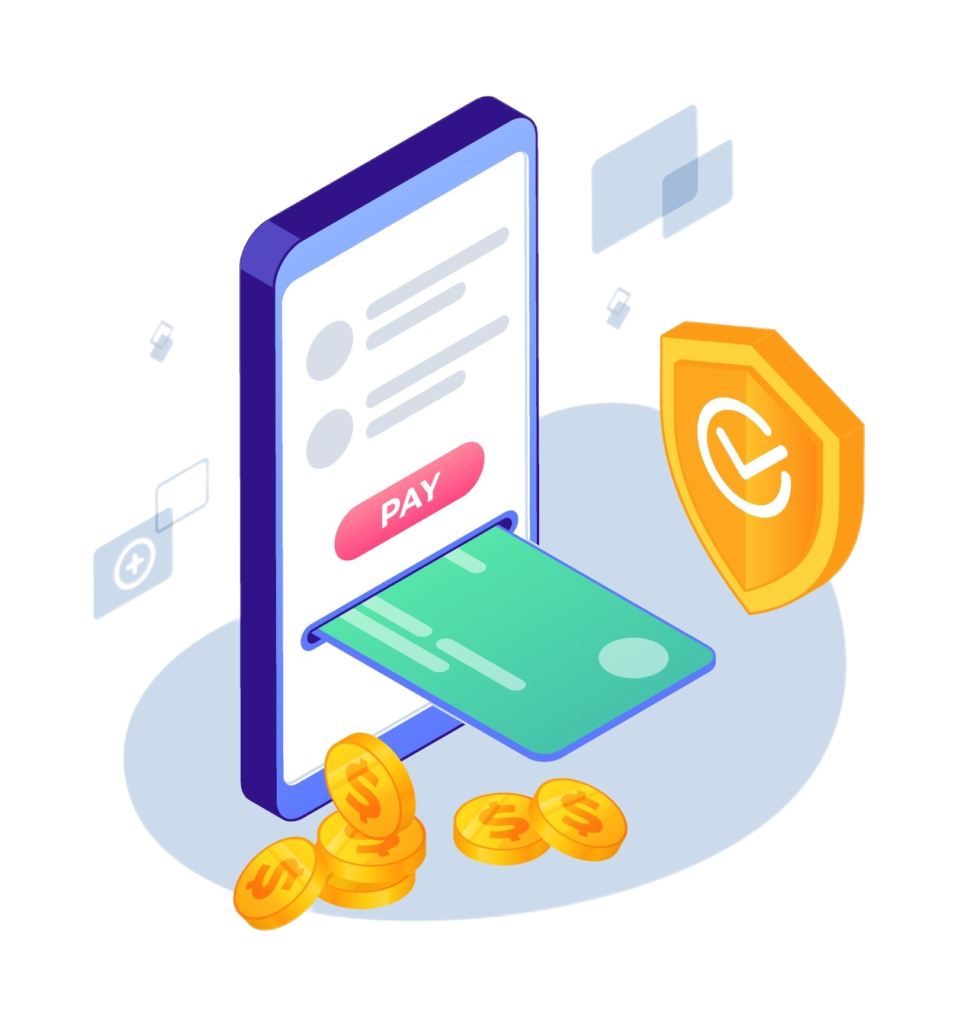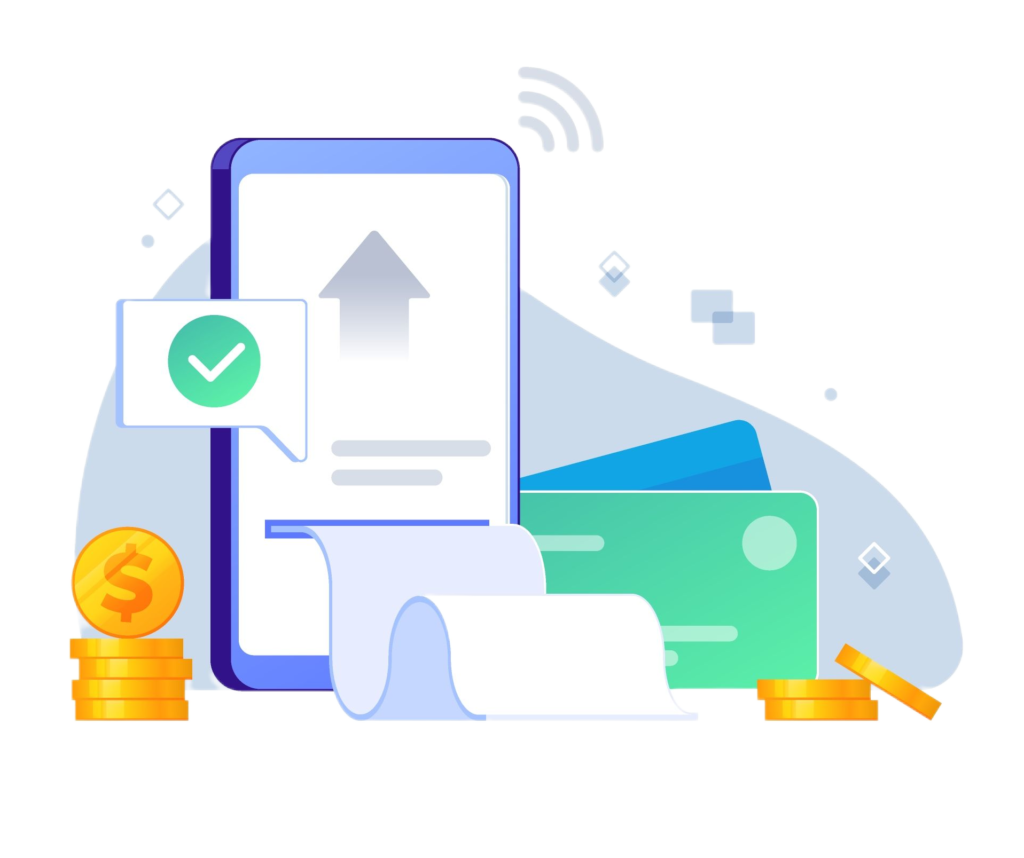What is a Fintech Industry and why is it important in 2025?
Fintech technology, or financial technology, refers to the use of digital solutions to provide financial services and products to customers. The field of Fintech encompasses a wide range of technologies like mobile apps, blockchain, artificial intelligence, and cloud computing, among others.
One of the key areas where Fintech industry has made a significant impact is mobile apps. In 2025, the importance of Fintech apps will continue to grow, as more people use their smartphones and mobile devices to access financial services. Fintech apps offer a wide range of benefits, including:
- Convenience and accessibility
Fintech app enables users to manage their finances on the go, from anywhere and at any time. They can check their account balances, make payments, and transfer funds with just a few taps on their mobile device.
- Personalization
Fintech app can provide personalized financial services and products, such as customized investment portfolios, based on a user’s individual financial goals and risk tolerance.
- Cost-effectiveness
Fintech app can often offer lower fees and charges than traditional financial institutions, which can save users money.
- Enhanced security
Fintech app uses advanced security features, such as biometric authentication and encryption, to protect users’ financial information and transactions.
- Innovation
Fintech apps are often at the forefront of technological innovation, leveraging emerging technologies such as blockchain and AI to provide new and improved financial services.
Fintech apps have disrupted the traditional financial industry, providing a level of convenience, flexibility, and innovation that was previously unavailable. They have also opened up new opportunities for entrepreneurs and businesses to enter the financial services industry, allowing them to offer new products and services to customers. As the demand for digital financial services continues to grow, Fintech apps will remain a critical component of the financial industry in 2025 and beyond.
Top 8 Types of Fintech Apps
There are many different types of fintech apps, each designed to provide a different set of financial services or solutions to consumers and businesses. Here are the most common categories:
Mobile Payment App – allows users to send and receive money instantly using their mobile devices (e.g. PayPal, Venmo, or our very own SkipCash)
Budgeting and Saving App – helps users track their spending, set financial goals, and save money (e.g. Mint)
Neobank / Banking Apps – mobile banking app offers banking services entirely online, without the need for physical bank branches (e.g. Revolut)
Investment App – provides easy-to-use platforms for investing in stocks, bonds, and other securities (e.g. Robinhood)
Lending Apps – enable individuals and businesses to borrow money from investors or lenders (e.g. LendingClub)
Personal Finance Apps – offer a comprehensive view of users’ financial accounts, credit cards, and investments in one place (e.g. Money Dashboard and PocketGuard)
Insurance App – offers insurance coverage for home, auto, and other types of property (e.g. such as Lemonade and Metromile)
Cryptocurrency App – allows users to buy, sell, and trade cryptocurrencies like Bitcoin and Ethereum (e.g. Coinbase and Binance)
SkipCash Mobile Payment App
Learn about our solution serving both as
a mobile wallet and a payment terminal.
Monetization models
There are several methods that fintech companies use to make money, most popular being:
Subscription: One way is to charge annually or monthly. Companies can offer new users a free trial period to encourage them to use their service.
Transaction Fees: The second method charges a fee as a percentage every time money is used or earned. A good example of a transactional approach is a crowdfunding company like Kickstarter, which takes 5% of the total funding from the project.
The PayPal business model uses this method to monetize user transactions. Companies that transfer money online also charge a fee for the amount transferred.Advertising: Another way for financial app to make you money is through advertising. This method is the easiest to set up as long as there is enough space on the website or mobile app to place the ad.

Fintech Mobile App Development Overview
Fintech has revolutionized the way we approach personal finance, investments, and banking. In 2025, the demand for Fintech mobile applications is higher than ever before. As people become more tech-savvy and expect their financial services to be available at their fingertips, building a Fintech app in 2025 is a smart choice for entrepreneurs and businesses alike. The purpose of this article is to provide a comprehensive guide on Fintech mobile app development. Here is the overview of the steps involved in building a fintech mobile app from scratch:
Design
Development
Launch
Maintenance and upgrades
Design
Fintech app design should be visually appealing, easy to use, and intuitive. Here are some best practices for designing the UI of your Fintech app:
User research and validation
Conducting user research and validation helps to ensure that the app meets the needs and preferences of the target market, and that it is user-friendly and intuitive. Here are the steps for conducting user research and validation when creating a Fintech app:
Identify your target audience
The first step is to identify your users, including their demographics, financial behavior, and pain points. You can use market research, surveys, and interviews to gather this information.
Conduct a competitive analysis
Analyze the competition and identify their strengths and weaknesses. This will help you to identify gaps in the market and areas where you can differentiate your app.
Develop user personas
Based on the information gathered, create user personas that represent your target market. User personas are fictional characters that represent your target users and help to focus your design efforts.
Define user journeys
Define the user journeys that your target users will take when using your app, including onboarding, registration, and key user tasks. This will help you to identify pain points and areas where you can improve the user experience.
By following these steps, you can create a Fintech app that meets the needs and preferences of your target audience and provides a user-friendly and intuitive experience. Conducting user research and validation is an ongoing process, and it is important to continue to gather feedback and make improvements to the app over time.
App's features
Once you have identified your target audience, you should define the features you want to include in your Fintech app. A good way to do this is by conducting a thorough analysis of your competitors’ apps and identifying the features that are most popular among your users. Some of the key features that you might want to include in your app include:
User authentication: A secure user authentication process that requires users to log in with a password, PIN, or biometric authentication such as facial recognition or fingerprint scanning.
Account management: Users should be able to manage their accounts, view their transaction history, and check their balances.
Payment gateway: Your app should support multiple payment options, including credit cards, debit cards, and e-wallets.
Budget management: Your app should help users track their spending, set budgets, and receive alerts when they are close to exceeding their budget.
Investments: If you are building an investment app for investments, you might want to include features such as stock tracking, investment alerts, and performance analysis.
Personalized recommendations: Many fintech apps offer personalized recommendations based on a user’s financial goals, risk tolerance, and other factors.
Fintech Trends 2025: Top 10 Emerging Innovations
Discover the top fintech trends.
From digital payments to AI and blockchain,
we've got you covered. Be a part of the digital
transformation.
Wireframing and Prototyping
Wireframes and prototypes allow you to visualize and test the layout, functionality, and navigation of the app before developing it. This can save time and resources in the long run and ensure that the app meets the needs and preferences of your target audience. Here is the process of creating wireframes and prototypes when creating a Fintech app:
Wireframes
Once you have a clear understanding of the user journey from the user research, sketch the wireframes on paper or using a digital tool. These wireframes should be simple and focus on the layout and content of each screen.
Test the initial wireframes with a small group of users to gather feedback on usability, navigation, and content. Use this feedback to refine the wireframes and iterate on the design.
Prototype
Once the wireframes have been tested and refined, develop a functional prototype of the app. The prototype should be interactive and allow users to navigate the app and complete key tasks.
Test the prototype with a small group of users to gather feedback on usability, navigation, and functionality. Use this feedback to refine the prototype and iterate on the design.
User Experience Design
Users expect a seamless and intuitive experience when using a Fintech app. Designing a user-friendly Fintech app that meets the needs and preferences of your target audience can lead to higher engagement and retention rates, and ultimately, the success of the app.
Utilize your user research
Use the information gathered in user research to inform the designers. This will help them to design an app that meets the needs and expectations of users.
Prioritize features
Prioritize the features that will provide the most value to the users. This includes essential features such as account management, transaction history, and payment processing, as well as additional features that may enhance the user experience.
Create a simple and intuitive interface
Design a simple and intuitive interface that is easy to navigate and understand. Use clear and concise language, consistent visual design, and familiar patterns and icons to create a seamless experience.
This involves creating a list of the screens and components that the app will require, such as login screens, account screens, transaction screens, and settings screens. It is important to ensure that the user interface is designed to be intuitive and easy to use.
Want to tap into the booming Fintech App trend? Contact us to learn more!
Let us help you create a custom app that meets
the unique needs of your business and customers.
Development
The technical architecture for a Fintech app involves a range of components and systems that work together to deliver the app’s functionality and provide a secure and reliable experience for users. Here’s an overview of the key components of a typical Fintech app architecture:
Back-end
The back-end of the app is the server-side component that stores and processes data. It includes the app’s databases, APIs, and servers. The back-end is responsible for performing complex operations such as transaction processing, account management, and authentication.
Define the requirements
The first step in creating a backend for a Fintech app is to define the requirements. This involves identifying the features and functionality that the backend must provide to support the app. Some common features include user authentication, account management, transaction processing, and data storage.
Choose a tech stack
The next step is to choose a programming language and framework for the backend. Popular options include Java, Python, Node.js, and Ruby on Rails. The choice of language and framework will depend on factors such as the app’s requirements, development team’s skill set, and scalability needs.
Design the data model
The data model is the structure of the data that will be stored in the backend. This involves defining the entities and relationships that will be used to represent the app’s data. For example, the data model might include entities such as users, accounts, transactions, and payment methods.
Implement business logic
The business logic is the set of rules that govern how the app operates. This includes rules related to user authentication, account management, transaction processing, and payment processing. The business logic is implemented in the backend using programming logic and database queries.
Front-end
The front-end of the app is the user interface that users interact with and is responsible for seamless user experience. It includes elements such as the app’s design, layout, and navigation. It is important to ensure that the frontend is designed to be intuitive, easy to use, and secure.
Choose a tech stack
The next step is to choose a fintech app development framework for the frontend. Popular options include React Native, Flutter, and Ionic. The choice of framework will depend on factors such as the app’s requirements, development team’s skill set, and performance needs.
Develop the user interface
Once the user interface has been defined in the Design stage, the next step is to develop the user interface using the chosen development framework. This involves creating individual components, screens, and navigational flows, and ensuring that they work seamlessly together.
Integrate the frontend with the backend
The frontend must be integrated with the backend to allow users to interact with the app’s data and functionality. This involves using APIs to send and receive data between the frontend and backend. It is important to ensure that the frontend and backend are fully synchronized and that data is being processed correctly.
Test and debug
Once the frontend and backend have been developed, it must be tested to ensure that it meets the app’s requirements and functions correctly. Testing should include unit tests, integration tests, and system tests. Any bugs or issues that are identified during testing should be fixed before the app is released to users.
Data-driven fintech solutions
We are ready to offer you deep industry
expertise and full-cycle solution development
API
The app’s API (Application Programming Interface) is the bridge between the front-end and the back-end. It enables the app to communicate with the server, sending and receiving data as needed. The API typically uses RESTful web services and JSON (JavaScript Object Notation) to exchange data.
Database
The database is where user data is stored. It includes information such as user profiles, transaction history, and payment information. The database must be designed to handle large volumes of data and be optimized for fast read and write performance.
Cloud services
Cloud services such as Amazon Web Services (AWS) and Microsoft Azure are often used to host the app’s back-end and database. This enables the app to scale to handle large volumes of users and provides additional security and reliability features.
Security
Fintech apps deal with sensitive user data, such as personal information, financial details, and transaction history. It’s essential to ensure that this data is protected from unauthorized access and kept confidential. This means implementing industry-standard features such as two-factor authentication, encryption, and secure connections using HTTPS.
Regulatory compliance
Fintech app must comply with a range of regulations and standards, such as the General Data Protection Regulation (GDPR), Payment Card Industry Data Security Standard (PCI DSS), and Know Your Customer (KYC) requirements. You should stay up-to-date on the latest regulations and ensure that your app adheres to these standards.
Third-party integrations
Fintech apps often integrate with third-party services such as payment processors, financial institutions, and credit reporting agencies. These integrations enable users to access additional functionality and services within the app.

Launch
Creating a plan for a Fintech app launch and marketing is a critical step in ensuring the success of the app.
Define the Launch Goals
It is important to define the goals and objectives of the launch. The launch goals may include increasing downloads, generating buzz, and creating awareness about the app.
Plan the Launch Date
Selecting a launch date is an important step in preparing for the launch. It is important to ensure that the launch date is aligned with the goals and objectives of the launch and is optimized for maximum impact.
Plan the Launch Activities
Launch activities may include PR, social media, influencer marketing, advertising, and email marketing. It is important to select the launch activities that will be most effective in reaching the audience and achieving the launch goals.
Plan the App Store Optimization (ASO) Strategy
ASO is an important part of the launch plan. It is important to optimize the app store listing to improve the visibility of the app and increase downloads. This may include optimizing the app title, description, keywords, icon, screenshots, and videos.
Maintenance and Upgrades
Fintech app maintenance and upgrades are critical to ensuring its optimal performance and continued success. Regularly updating and improving the app can also help to retain users, attract new users, and differentiate the app from competitors. Here are some steps for maintaining and upgrading a fintech mobile app:
Regularly Monitor User Feedback
Continuously monitor user feedback to identify any issues or areas of improvement in the app. This can be done through app store reviews, surveys, user testing, and customer support.
Conduct Regular Quality Assurance Testing
Conduct regular quality assurance testing to ensure that the app is functioning properly and there are no bugs or glitches. This can include automated testing, manual testing, and user testing.
Update the App's Software and Technology
Stay up-to-date with the latest software and technology to ensure the app is running on a secure and efficient platform. This includes regularly updating the app’s operating system, libraries, and dependencies.
Improve User Experience
Regularly make updates and improvements to the user interface and user experience to ensure that the app is easy to use and intuitive. This can include adding new features, simplifying workflows, and improving performance.
Maintain Data Security
Ensure that the app is secure and users’ data is protected by regularly updating security protocols and encryption methods. This can also include complying with regulations and industry standards.
Keep the App Compatible with Devices
Ensure that the app is compatible with the latest mobile devices and operating systems. This may require ongoing testing and updates to ensure compatibility with a wide range of devices.
Analyze Data and Implement Upgrades
Analyze data and metrics to understand user behavior, engagement, and performance. This can help to identify areas of the app that require improvement or optimization.
Plan and implement upgrades to the app, including major upgrades or new features, to ensure that the app remains competitive and provides value to users.

8 Best Practices for Fintech App Development
For those who want to develop a fintech app, here is the summary of the best practices for fintech mobile app development to keep in mind:
Hire a reliable fintech app development company
It is important that the team members are familiar with the fundamental operations of the Fintech application development business and that they comprehend the purpose and procedures of creating the app.
Optimize the fintech app for app store visibility
Implement effective ASO strategies to optimize the app for app store visibility and increase downloads. This can include keyword research, app description optimization, and leveraging social media and other marketing channels.
Conduct extensive market research
Conduct extensive market research to identify market needs, industry trends, and potential competitors. This will help to ensure that your app is unique and addresses the needs of your target audience..
Plan for maintenance and upgrades
Plan for ongoing maintenance and upgrades of the app to ensure optimal performance and continued success. This can include regular updates to the app's software and technology, user interface, and new features and functionality.
Focus on user experience
Focus on creating a user-friendly and intuitive interface that makes it easy for users to navigate the app and complete tasks. This will help to increase engagement and retention.
Data security and privacy
Ensure that the app is built on a secure technical architecture that protects users' data and privacy. This can include implementing strong encryption methods and complying with industry regulations.
Consider the scalability of the fintech app
Consider the scalability of the app and build it on a technical architecture that can grow and adapt to changing user needs and technology trends to ensure that the app remains relevant and competitive.
Test and validate the fintech app
Conduct extensive testing and validation of the app to ensure that it meets the needs of users and functions properly. This can include user testing, quality assurance testing, and ongoing monitoring of user feedback.
Conclusion
In recent years, there has been a significant increase in demand for a successful fintech app development. Consumers are looking for convenient and secure ways to manage their finances, and a mobile app can provide this. Additionally, mobile usage has been growing rapidly, and it’s expected to continue to grow in the coming years. By building a fintech mobile app now, you can tap into this growing user base and provide a convenient and accessible way to manage finances on-the-go.
Building a successful fintech mobile app requires a combination of technical expertise, user research and validation, design thinking, and ongoing maintenance and optimization. By following these recommendations, you can increase your chances of building an app that meets the needs of users, is competitive in the market, and achieves success in 2025 and beyond.
Unlock your project's potential.
Answer 10 questions and get a comprehensive project estimate
and take the first step towards success
FAQ
Fintech mobile apps can offer a wide range of financial services, including banking, investing, payments, budgeting, insurance, and more. These apps can leverage the capabilities of mobile devices to provide users with a seamless and convenient user experience, such as allowing users to make payments, manage accounts, or check balances on the go.
The key features of a fintech app depend on the specific type of app and its intended purpose. However, some common features include user authentication, account management, payment processing, budgeting and expense tracking, investment tools, personalized recommendations, customer support, and data security.
The cost of building a fintech app can vary widely depending on the app’s complexity, functionality, and features. A rough estimate for a basic fintech app can start from $30,000 to $50,000, while a complex app can cost upwards of $500,000 or more.
Fintech app development requires a combination of technical and financial expertise. Developers should have strong skills in programming languages such as Java or Swift, as well as experience with mobile app development frameworks. In addition, knowledge of financial systems, banking regulations, and payment processing is helpful.
Some common challenges in fintech app development include ensuring compliance with regulatory requirements, maintaining data security, integrating with third-party services, and providing a seamless and user-friendly experience for customers. It’s important to work with a reputable development team to ensure that these challenges are addressed effectively.






